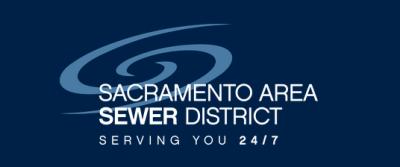Evidence of surveying, defined as the science and art of measuring distances and angles to determine the relative position of points above, on or beneath the surface of the earth, exists as early as 5,000 years ago in ancient Egypt, where harpedonapata (rope stretchers) used ropes and knots tied at pre-determined intervals to measure distances.
Tracing the importance of land surveying back to the Egyptians’ need to delineate farm tracts for tax purposes after annual flooding of the Nile River washed away markers separating individual parcels of land, scholars believe the Pyramids were also laid out using this system of knotted ropes and simple levels.
In approximately 120 B.C., the Greeks developed the first piece of surveying equipment (diopter), improved on surveying techniques and standardized procedures for conducting surveys.
Pythagoras proved the geometric reasoning behind the principles, demonstrating a relationship between mathematics and surveying, and formalizing the 3-4-5 triangle discovered by the Egyptians to indicate right angles.
Sixteenth century exploration and navigation motivated the invention of sextents and other instruments to measure angles, but it was the nineteenth century’s Industrial Revolution that sparked significant changes in surveying techniques and more accurate instrumentation.
Particularly in America, where the government devised a system to divide the lands west of the original 13 colonies, precise surveying was crucial.
America’s clearly defined sectionalized land system, still in use today, created sections, townships and ranges so the government could sell 40-acre tracts to citizens in an effort to rebuild the war-depleted Treasury.
One of the most famous early American surveyors was George Washington, who used surveying instruments inherited from his father, including a surveyor’s compass with Jacob’s staff (the pole and chain links for measuring distances and some drafting instruments) to survey more than 200 tracts of land between 1747 and 1799.
Adding
Personal Perspective
According to Dave Moeller, vice president of Iowa-based Snyder & Associates Inc., surveying changed little over the next 200 years.
“In the early ’80s I spent my summers on a county survey crew, mostly providing staking for culvert, bridge and road construction projects,” he said. “We surveyed pretty much the same way George Washington did, except we had a better chain [a steel tape instead of a link chain] and better instruments with better optics. Electronic Distance Measurements [EDM] were rare, and total stations were even scarcer. In general, what we staked and the processes we used were well established and pretty consistent from project to project. The crew chiefs I worked with taught me how to stake an abutment in the same way they were taught 20 years earlier.
“We spent quite a bit of time setting up baselines, centerlines and off-set points, holding a plumb bob and hollering ’There!’ back and forth. All this work was done before we staked a single constructed element, such as a bridge abutment or a culvert centerline. We were building a relative system to use throughout the phases of construction — ’something to hang your hat on,’ as my old crew chief used to say.”
Defining Construction Surveying
In the 1950s EDM largely replaced triangulation methods for distance measurements. Set up separately or mounted atop a non-digital theodolite (what Moeller described as “the next evolutionary step above a transit”), they shoot infrared or microwave beams at a reflector, measuring distance precisely.
Total stations that integrated the electronic distance measuring capability with the theodolite replaced EDMs.
Electronic data recorders were then developed, which advanced the transfer of electronically collected data to computer plotting and drawing systems, in turn significantly reducing man hours consumed by manual drawing.
Construction surveying — the translation of construction plans into physical points on the ground — provides the horizontal location of structures and the vertical information required to ensure that surfaces drain and pipes flow properly.
Stakes and points are typically offset so the survey stakes won’t be disturbed by excavation or other work at the point of construction and are marked with an “offset” and a “grade” indicating the spatial relationship of the stake to the actual point.
Two Decimals
Divided by Four
Moeller recalled his early experiences as a surveyor:
“The plans we used were all hand-drafted with station and offset call-outs to all important features, and linear dimensions for structural elements and closely associated features,” he said.
“By the end of the project, the survey book and the plans were full of intermediate calculations and distances calculated from station and offset data to chainable dimensions. Most designed features were to the even half-foot station or offset, and the slopes were expressed to two decimals, all divisible by four. That had me stumped until I got a break from swinging the maul setting paving hubs and noticed how easy it was to calculate profile elevations every 25 feet on a straight grade.
“The divisible-by-four convention and the limit of two decimals on vertical grades really helped out the staker in the field because grades are expressed in percentages, or feet per 100 feet or station. Fine grading or paving hubs are set every 25 feet [one-fourth of a station], so if you were figuring grades, each successive hub elevation was one-fourth of a percent grade higher or lower.
“The electronic age eliminates the need for ease of calculation and you get a very precise profile grade and elevation measure for every stake. What is lost is a simple method for the staker to ’get into’ the way the profile system is working and mentally check if the answer is consistent and what is anticipated.”
Changes in Survey and Plan Preparation
As Moeller explained, “The art and science of staking has changed at a high rate, continuously offering new opportunities to increase speed, efficiency and precision. Based on the perceived improvements, the industry is under pressure to provide stakes faster and cheaper than ever before.
“The development of computer-based design and plan production has advanced significantly, and they commonly rely on horizontal coordinates tied to a known datum and GPS [Global Positioning System] control point networks. The design features can be set anywhere to 16 decimal point precision. In addition, 3-D models frequently express designs. Profile grades are expressed to four decimals and are rarely divisible by four.
“Back in the ’old days’[the ’80s], governments and owners commonly provided the construction stakes for the project, either by their own staff or by the design professional hired to prepare the plans and specifications. These days, the stake-out for construction is generally included in the construction contract and is the responsibility of the prime contractor.
“Available information for a project now varies widely. Some governments make all digital files available, including coordinate geometry design files and three-dimensional computer-aided design [CAD] files. Others allow only image files without coordinates or hard copy plan drawings.
“Often, information necessary to stake a design element is expressed in plan dimensions and coordinates, and shown on a digital file. The stake-out surveyor doesn’t know which of the potential three sources of information governs. Based on the demand for speed, should the fastest source of information always be used?”
The Dangers of GPS
“EDMs have come and gone,” Moeller reflected. “When I began my career, total stations were used with regularity, with data collectors capable of downloading and uploading information. Now, total stations with internal data collectors and coordinate geometry calculation capabilities are being used, and GPS units and laser levels are the common equipment.
“The total station combined the EDM capabilities with the horizontal and vertical angle measuring capability of a theodolite,” said Moeller.
A total station is an optical instrument — a small telescope equipped with an electronic distance-measuring device (EDMD) — typically set up on a tripod, combining an electronic theodolite (transit), an electronic distance measuring device and software running on an internal computer.
It determines angles and distances from the instrument to points to be surveyed.
The Global Positioning System is a satellite navigation system used to determine a precise location and provide a highly accurate time reference using an intermediate circular orbit satellite constellation of at least 24 satellites. Maintained by the U.S. Department of Defense, it can be used by anyone at no charge.
Using GPS technology, “coordinates can be pulled from anywhere,” said Moeller. “It’s supposed to be simpler, quicker. Using coordinates uploaded from the electronic design file, a survey crew could set a single piling or light pole with the very first stake set on a project. As unlikely as that example sounds, the information is available, and in an effort to take advantage of opportunities, it is often desirable to have stakes set out of traditional sequence. This new technology has resulted in higher expectations.
“However, as tempting as this is, the stake-out of a project is the first view of the design at full size, or ’one scale,’ and is the last chance to clarify the intent of the design shown on the plans. Establishing project elements out of sequence increases the risk of potential conflicts between critical inter-relationships.
“For example, in the installation of a water main before an elevation-sensitive sewer: If there is a conflict, choices are limited, and would likely result in removal and reinstallation of the water main, regardless of plan error or unknown condition.
“What compounds the problem is the accumulation of error. Every thing that is built includes a series of processes: cutting to grade, compacting, installing sub-base material, compacting some more, trimming, paving … All are processes with inherent variability, acceptable within certain tolerances that may compound or offset, depending on the particular application.”
Although GPS systems have increased the speed of surveying, they are accurate only to approximately 20 mm. For that reason, EDMDs are still used. Some in the industry believe that’s wise, because the “old rules” don’t apply in a GPS-driven (vs. coordinate-driven) situation. There is still value in the old methodology that relies on cumulative and individual measurements because it’s possible to lose relativity using a coordinate-driven method.
“The reality of construction is that it is a human endeavor, and that real-time adjustments are often made to expedite the work,” Moeller continued. “The built environment is a system with various functions where the proximal relationships are more important than the absolute and precise position.
“For example, it is critical that a guardrail is a set distance above the road surface and offset from the pavement lane; the rail’s elevation above sea-level or its distance from the moon is irrelevant. Unfortunately, it’s much faster to precisely stake the coordinates and elevation of each guardrail post uploaded from a digital file than it is to measure an offset and elevation from the edge of the traveled way. Equally unfortunately, they could both be wrong.”
Satellite coordinates may be staked precisely, but it’s possible they aren’t staked accurately. Precision and accuracy are not the same. Precision relates to the quality of method used to obtain a result; accuracy relates to the quality of the result, the degree of conformity with a standard. The question is, will the new technology and methodology produce the same level of accuracy previously achieved?
Moeller concluded that, by default, the role of the stake-out crew is now the arbiter in the on-the-ground conflict between absolute and relative dimensions. If that is the new role, they will need to be armed with:
• different contract language in their relationship with the builder;
• more training in the complete understanding of the entire proposed project;
• more information from the design plans than just coordinate files;
• a close relationship between the designer and the builder (and possibly a three party agreement).
Discussing
Change Theory
The debate on the horizon centers on the question of when technology has gone beyond the realm of efficiency.
Using a coordinate-driven system, is relativity lost and are cumulative measurements meaningless?
Measurement is an abstract science. It’s inexact; the magnitude of that inexactness is called error — as opposed to a mistake in the application of a measurement, a misreading of the scale or improper adjustment of the instrument. Error is inherent in measurement.
New technology, such as GPS, introduces potential for a different kind of error.
In Alvin Toffler’s 1970 book “Future Shock,” he predicted that the accelerated pace of technological development would have a profound effect on civilization, and he recognized that the disjunction between technological changes and human adaptation to them could be the source of major problems.
He highlighted the fast rate of change and its displacement of technical matters taught in school — a concept readily adaptable to what is occurring in the construction industry, particularly as surveying technology advances more quickly than our acclimatization to dealing with potential discrepancies in the information provided by new methodology.
Staking is the point of convergence where technology and the digital model meet reality. With the art and science of staking changing at a high rate, this industry must learn to adapt.
With approximately 100,000 engineering firms nationwide, how does the discussion begin, and will it result in any practical solutions before new technology supplants the current methodology, bringing with it a new set of challenges? CEG
Today's top stories















